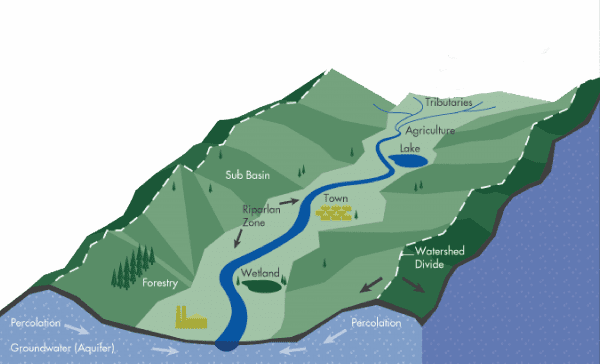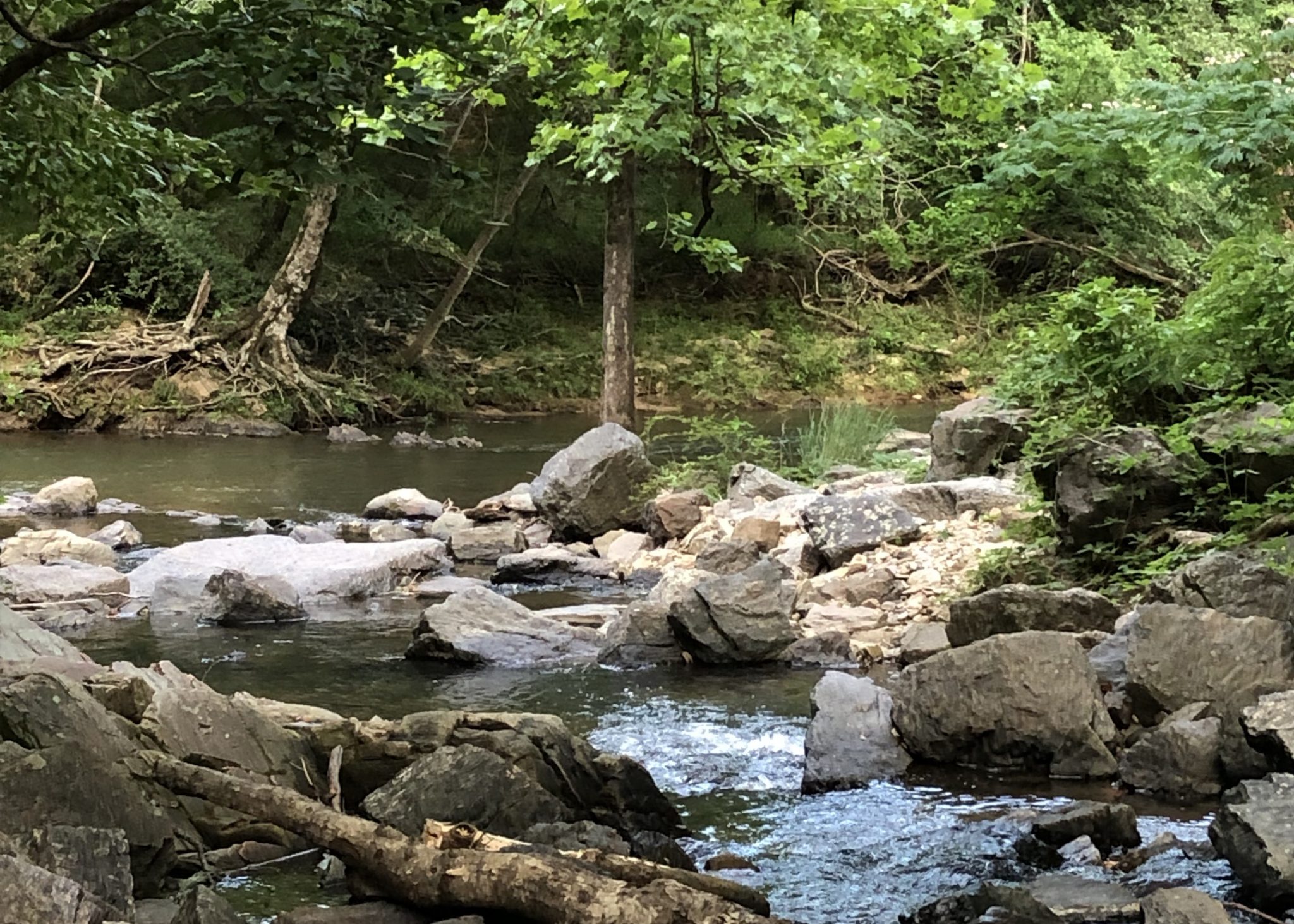Watershed Stewardship

 A watershed is an area of land through which rainwater drains by flowing across, through, or under the soil surface to a common low point, typically a stream, river, lake, or ocean. Each drainage system is its own watershed, and all watersheds are connected across the landscape and flow to the lowest point).
A watershed is an area of land through which rainwater drains by flowing across, through, or under the soil surface to a common low point, typically a stream, river, lake, or ocean. Each drainage system is its own watershed, and all watersheds are connected across the landscape and flow to the lowest point).
We all live and work in a watershed, as all land is part of a watershed. Your everyday actions (work, play, and general living) can impact (positively or negatively) the quality of water that flows from your watershed. As water flows through the system, the impacts are cumulative. This means that everything you do on the land can impact the water that flows to your downstream neighbors. Likewise, everything that landowners above you do impacts the quality and quantity of what flows across your land.
The functions of rivers and streams are to transport water, transport and deposit sediment, transport and replenish nutrients, and provide biological functions (food, shelter, shading, movement, etc.).
The boundary between two watersheds is called a divide. Watershed divides are defined by the elevational high points or ridges (the highest point of an area of land, such as the top of a hill or mountain) that surround a given drainage system or network of drainage systems. Any water that falls outside of a watershed divide will enter another watershed and flow to a different point. All of the land that drains water to a common point is considered to be in the same watershed.
Watersheds come in many different shapes and sizes and have many different features. They can have hills or mountains or can be nearly flat. They may include farmland, rangeland, small towns, and big cities. Watersheds may be as small as the creek that flows near your house or as large as the Mississippi River Basin, which drains 1.2 million square miles. The water bodies within a watershed also can be categorized according to their size and function.


